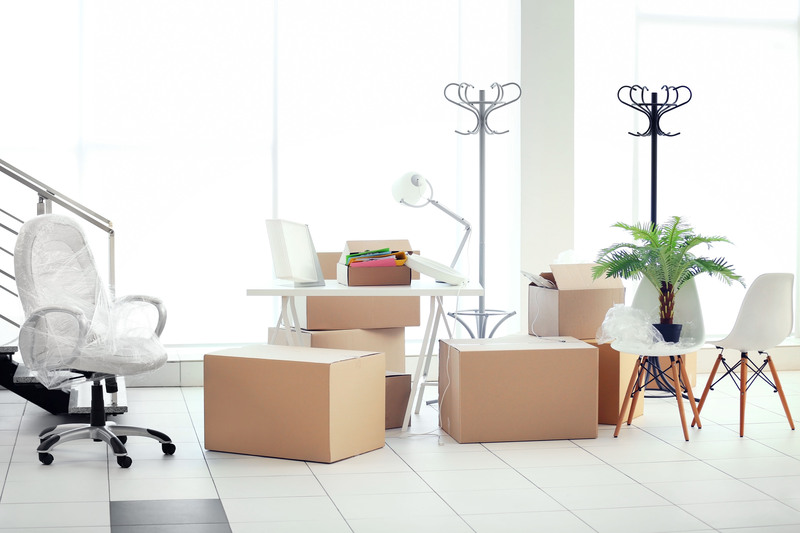Professional Tips for Safely and Efficiently Moving a Piano
Posted on 15/06/2025
Professional Tips for Safely and Efficiently Moving a Piano
Moving a piano is no simple feat. These gorgeous, complex musical instruments are both heavy and delicate, making the task potentially risky for the unprepared. Whether you're a professional mover, a concerned piano owner, or just a curious individual, this comprehensive guide offers expert tips for safely and efficiently moving a piano of any size. Learn why preparation, careful handling, and the right equipment are key, and discover the best practices to protect both your piano and your home throughout the process.
Why Moving a Piano Is a Unique Challenge
Pianos are intricate pieces of craftsmanship, weighing anywhere from 300 to over 1,000 pounds. Their unique build, uneven weight distribution, and delicate internal mechanisms make them particularly challenging to move. A single misstep could lead to costly damage--or even personal injury. Whether it's an upright or grand piano, understanding the risks and the necessary precautions is essential for a successful relocation.

Types of Pianos and Their Moving Requirements
Common Piano Varieties
- Spinet Piano: Smaller, lighter, but still requires careful handling.
- Upright Piano: Heavier and bulkier due to vertical soundboard and frame.
- Baby Grand Piano: Shorter, but with a wide and awkward footprint.
- Grand Piano: Large, heavy, and challenging due to unique shape and size.
Each type presents different challenges, and your approach must adapt accordingly. Below are step-by-step instructions for moving professional pianos, regardless of their variety.
Essential Equipment for Moving a Piano Safely
Having the proper equipment is the first step in ensuring a secure move. Here are the must-have tools:
- Piano dolly (a four-wheeled, heavy-duty flat dolly designed for piano transport)
- Moving straps with ratchets for stabilization
- Thick moving blankets to protect against scratches and impacts
- Furniture sliders for easy repositioning
- Measuring tape (always measure doorways and paths in advance)
- Rubber gloves for a firm grip and hand protection
- Allen wrench or screwdrivers for disassembly (especially for grand pianos)
Preparation: What to Do Before Moving Your Piano
1. Plan Your Path In Advance
One of the most vital piano moving tips is careful planning. Measure every doorway, hallway, and staircase along your route. Note any tight corners or steps. Visualize how the piano will pass through each space. Clear all items and ensure the pathway is free of tripping hazards.
2. Secure the Piano's Internal Components
- Close and lock the keyboard lid. If there is no lock, secure it shut with tape.
- Remove detachable parts, such as music stands, legs (for grand pianos), and casters when possible.
Cushion these pieces in blankets and transport separately.
3. Protect the Exterior
Wrap all sides of the piano in thick moving blankets, securing with straps or tape. Never let tape touch the piano finish, as adhesive can damage the wood or lacquer. Pay special attention to corners and pedal areas.
Step-by-Step Process for Moving a Piano
The actual move requires strength, teamwork, and precision. Here is a professional stepwise guide to safely transporting a piano:
Step 1: Gather a Team
You will need at least 3-5 strong, capable people. Ensure everyone understands their role and the plan. Communication is essential through every phase.
Step 2: Carefully Lift the Piano
Never attempt to move a piano alone! Lift from the base--not the legs or keyboard--using your legs, not your back. Keep the instrument upright at all times; tilting can damage the frame, keys, or strings.
Step 3: Secure the Piano on the Dolly
- Upright Pianos: Slide the dolly under the center, then secure with straps.
- Grand Pianos: Remove the legs and pedals. Pivot the piano on its side and place it on a grand piano skid board before securing to the dolly.
Step 4: Navigate Through the Home
- Move slowly, coordinating steps and turns.
- Keep the piano as level as possible.
- Use ramps for steps whenever possible.
- If going downstairs, use extreme caution--one person should be at the base of the piano as a spotter.
- Be mindful of wall edges and door frames to avoid dings and scratches.
Step 5: Loading Onto the Moving Truck
Use a sturdy ramp. Move the piano up onto the truck with slow, steady force. Inside, secure the piano against the wall with straps to prevent it from shifting during transit.
How to Move a Piano Without Injury
The top risk in piano relocation is injury. Here are safety pointers every mover should keep in mind:
- Bend at the knees, never the waist. Use your strongest muscles--the legs and core.
- Wear supportive gloves for grip and protection.
- Avoid sudden jerks or swings. Use slow, deliberate movements.
- Take breaks as needed; don't rush.
- If you feel pain or strain, stop immediately.
Piano Moving Mistakes to Avoid
Even minor errors can lead to smashes, scratches, or internal damage to your piano. Here are common mistakes to avoid:
- Attempting to move a piano with too few people
- Forgetting to measure doorways or routes
- Not using proper moving straps and blankets
- Trying to roll the piano on its castors (they're not meant for long-distance moves!)
- Tilt the piano dramatically, risking damage to the internal structure
- Overlooking securing the piano during vehicle transport
Why You Should Consider Professional Piano Movers
While DIY piano moving is possible, it comes with substantial risk. Knowing when to bring in seasoned pros is a hallmark of responsible ownership. Professional piano movers have dedicated equipment, specialized training, and insurance to cover accidental damages.
- They're skilled at navigating tight spaces and staircases
- They offer efficiency, often completing moves faster and more safely
- Piano movers provide insurance coverage for added peace of mind
- They can minimize the risk of injury for you and your helpers
If your piano is irreplaceable, heavy, or must travel multiple flights of stairs, it's wise to invest in professional help.
After the Move: Setting Up Your Piano
Once your piano has arrived at its new location, give it time to acclimate to the environment before tuning (experts recommend waiting one to two weeks). Temperature and humidity can temporarily affect the instrument's sound and structure.
- Reattach any removed parts (such as legs and pedals) carefully.
- Wipe the exterior with a soft, dry cloth to remove any dust from the move.
- Check for visible damage or loose components.
- Schedule a professional piano tuning after it settles.
Piano Moving FAQ
Can I move a piano on its castors?
Castors are only meant for gentle repositioning within a room, not for moving long distances or over thresholds. Relying on them risks snapping the legs or damaging the floor.
Do uprights and grands require different moving techniques?
Yes! Grand pianos often require partial disassembly and skid boards for safe transport, while uprights need to stay vertical and secured on a flat dolly.
How much does professional piano moving cost?
Prices vary based on piano type, distance, stairs, and complexity. Most jobs fall between $200 and $1,000, but grand piano moves and tough moves can cost more.

Bonus Tips for Stress-Free Piano Relocation
- Try to move your piano during mild weather to avoid wood expansion or contraction.
- Photograph your piano before the move for insurance.
- Communicate with your moving team constantly.
- Don't forget to notify your homeowner's insurance provider if you're making a major move!
Conclusion: Move Your Piano Like a Professional
Moving a piano is an undertaking that combines physical effort, planning, and delicacy. By applying these professional piano moving tips, you can ensure both the safety of your instrument and everyone involved in the process. Remember: Preparation, the right equipment, a capable team, and careful execution are your best allies.
Still feeling daunted? Don't worry--sometimes the safest option is calling in certified piano movers for peace of mind and expert service. Either way, now you're equipped with the knowledge to ensure the safe, efficient relocation of your valued piano.





